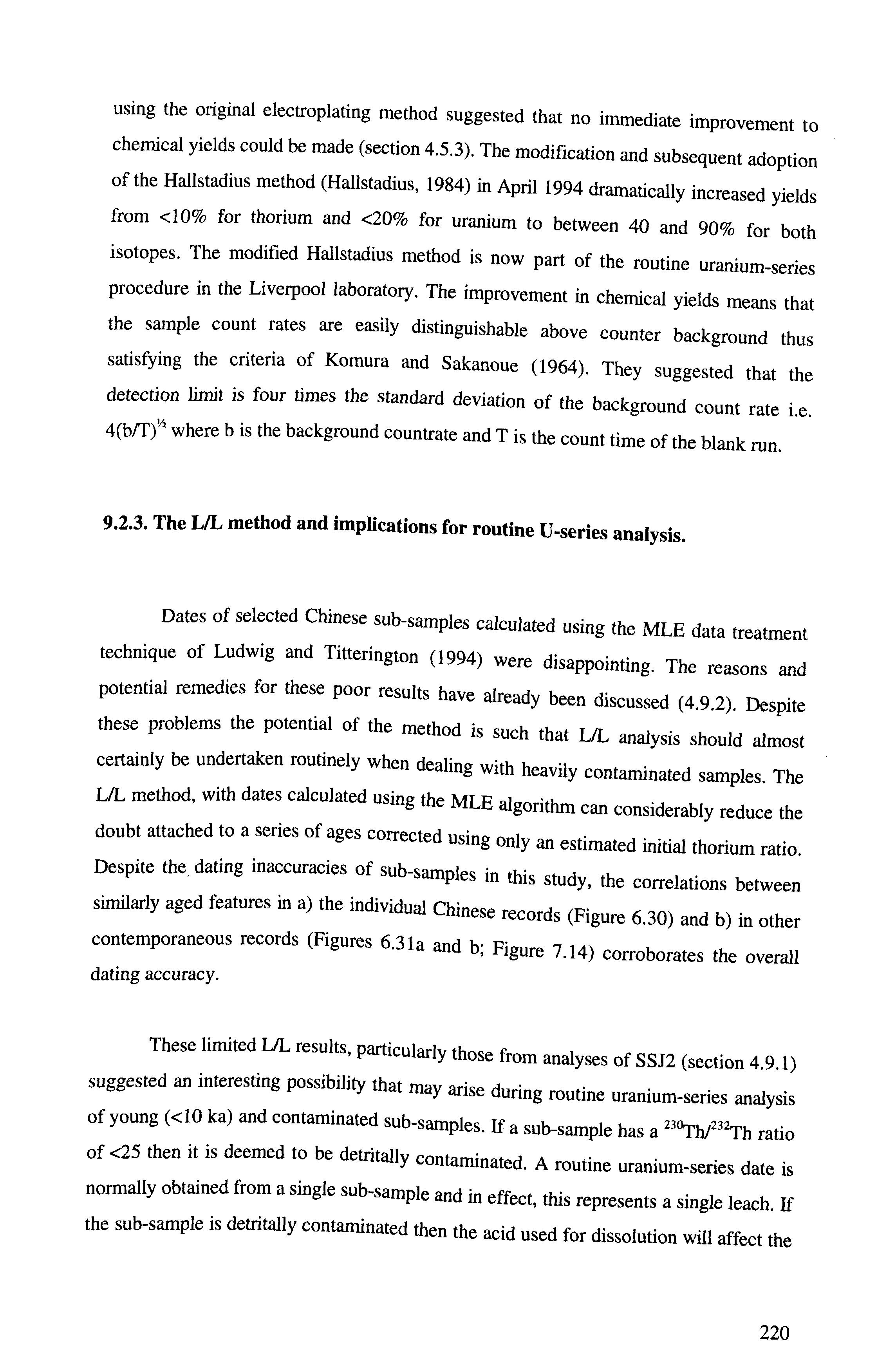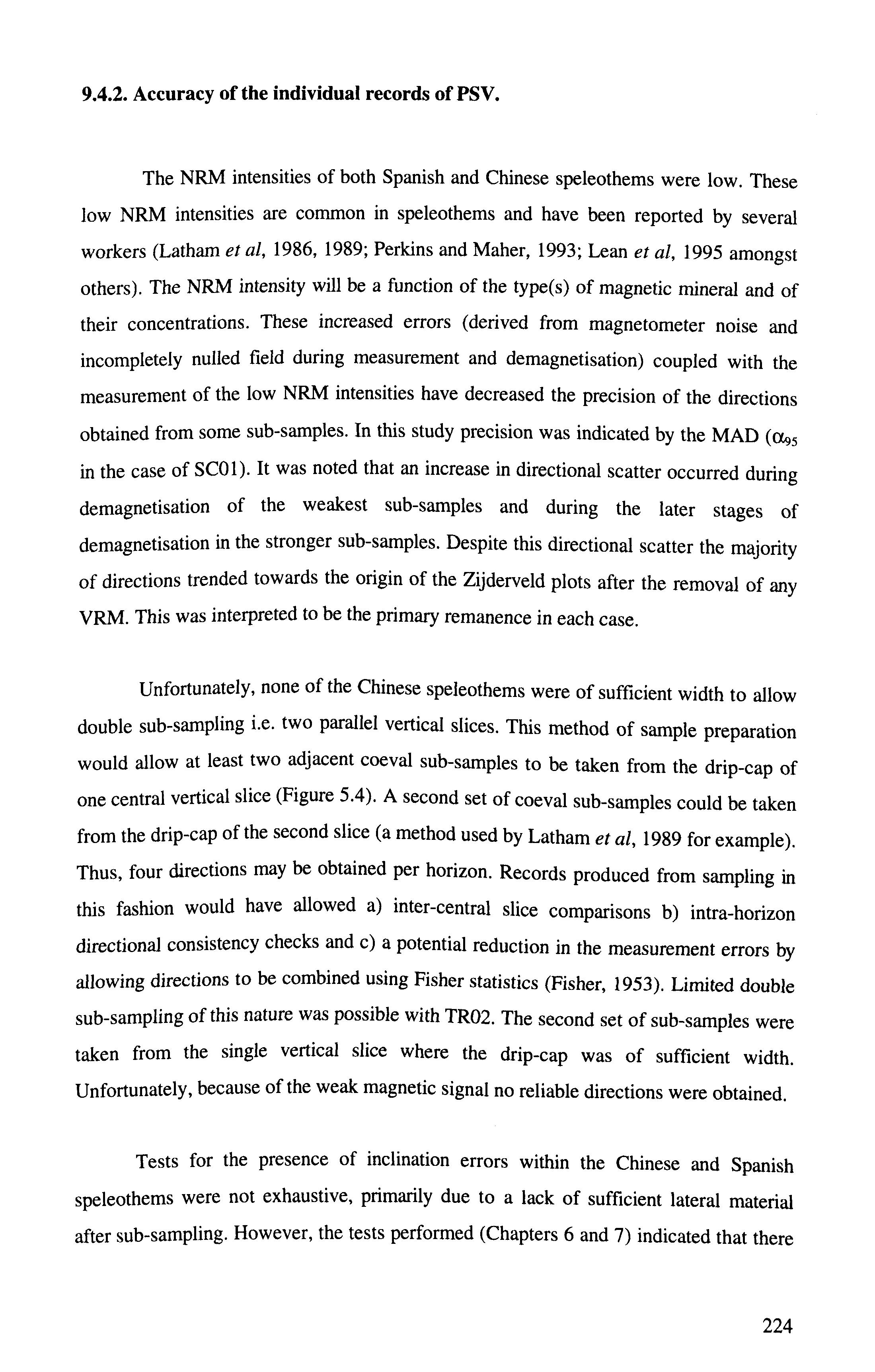
1 minute read
9 .3 .210Pb dating and its potential for dating young speleothems
leaching, as expected. Despite all samples being coeval, corrections using an initial thorium ratio of 1.5, produced dates that varied between 1.7±0.4 ka (when using 2M
H N 03) and 1.2±0.5 ka (when using 7M H N 03). These dates are equal within the l a
Advertisement
confidence limits but examination of Table 4.4 shows that the dates are increasingly
reduced with increased acid strength. Thus, at the very least the acid used for dissolution during routine uranium-series analysis should be of constant molarity.
Thus, a PSV record dated from ‘dirty’ samples with no assessment of the effects
on age from the detrital isotopes (using the L/L or some other method) and dated using standard uranium-series procedure, could suffer from age-shifting by at least several
hundred years. In the absence of further dates, such as those produced using the L/L
method which takes contamination into account, this shift in age remains unknown. In
actual fact, the dates from individual SSJ2 leaches were all over-corrected using an initial
thorium ratio of 1.5 according to their MLE date of 2.1±0.3 ka (Table 4.4).
9.3. 210Ph Hating and its potential for dating young soeleothem s.
The results from the 2l0Pb dating were promising (section 4.10). The technique
has the potential to measure accurately the short-term growth rates over periods of,
perhaps, as little as 2-3 years by careful sampling of growth layers. In addition, it can
demonstrate whether a speleothem has grown during the past 150 years. Thus, estimates
on growth rate based on 210Pb would compliment and, perhaps, replace in some cases
those estimated from U-Th dating over this time range. Even with precise U-Th dates the
identification of growth rate changes, or even stoppages, less than 200 years are unlikely.
For example, using U-Th disequilibrium the lowest age errors achieved for individual sub-samples in this study were ±0.1 ka (TR01).
In part, the non-linearity in unsupported 2l0Pb activity in the older growth layers of PT03 (Figure 4.10) could be explained by the imprecise method of sampling these
layers Thus, the time periods covered by the material from each scrape may not have
been equal. In future work the use of small dental drills (as used in oxygen isotope work)








